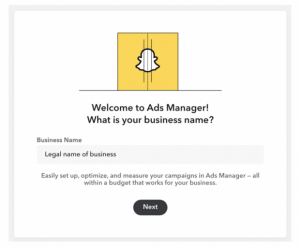On paper, IBM looked like a model tech company — until it didn’t. “Big Blue” positioned itself on the vanguard of the Information Revolution in the 1970s and early ’80s. Yet by 1990, it was teetering on the edge of bankruptcy.
What happened? The facts were plain enough: Once a hotbed of talent, Big Blue tended to hold up its most creative leaders. Its sclerotic infrastructure made it hard to bring innovations to market. In short, it had failed to keep up with the latest trends because its organizational culture had stagnated.
IBM’s fate can befall any firm. Without vigilance about maintaining healthy values, a company can begin deteriorating. Before long, its finances will track the mood in the boardroom.
Any remedy for a toxic corporate culture must begin with an honest diagnosis. Is your company at risk? There are a few different ways to find out, ranging from enlisting the help of a leadership speaker to looking for telltale signs of a sick workplace. If you choose to go the latter route, here’s what to look for:
1. Do your employees feel safe and secure?
In psychological circles, Abraham Maslow’s concept of a hierarchy of needs remains influential almost 80 years after its conception. Maslow thought our behavior was motivated by an ascending pyramid of desires. Near the foundation? Our need for security. Without guarantees of protection, we’re unlikely to invest in higher-order goals like belonging and meaning.
In the same way, if your business climate is unstable, your workers will be focused on surviving rather than creating a thriving culture. Any cultural reform starts by ensuring employees feel secure. Create a stable work environment, and you’ll make it possible for them to grow and flourish.
2. Do your employees find meaning in their work?
Failing work cultures are filled with employees who see their work as just a paycheck. By contrast, successful company cultures instill a purpose that transcends compensation.
Maybe it’s a spirit of problem-solving or a call to make the world a better place. Or perhaps it’s the reward of being able to contribute to an industry leader’s strategy. Whatever it is, help your employees see the bigger picture their efforts help create.
3. Is your team aligned around a shared mission?
It’s great when your staffers find meaning in their jobs, but if they can’t integrate these ends with the company’s purpose or with the activities of their co-workers, you might have to change your culture. Every company has a mission; most companies state this mission explicitly. Far too many workers, however, don’t identify with it.
Purpose statements exist precisely to orient employees toward a common goal: the company’s mission. If your hires aren’t aligned with that mission, your culture’s going to enter terminal decline. Find out why your workforce isn’t committed to the company’s vision. Update the mission statement, or the way you present it to employees, as needed.
4. Is your infrastructure clear and easy to navigate?
IBM’s problem was that its massive scale made it hard to coordinate needed changes to stay competitive. As it grew, it added layers of bureaucracy and red tape. Any innovation needed so much vetting from overlapping offices that it got starved for funding, slowed by red tape, or watered down by risk-averse managers.
The institutions your company uses to run say a lot about its values. If it sees staying on the cutting edge as important, its processes and production strategies will reflect this concern. If it wants its employees to be able to excel, it will make its infrastructure user-friendly. Employees who feel heard are 4.6 times more likely to feel empowered and perform their best work. If a company truly cares about its employees’ opinions, it will adapt its structures to reflect their input.
5. Is your company agile enough to position itself for the future?
In companies too focused on the horizons of paychecks and profit margins, short-term strategy prevails. No one is too committed to playing a long game — in part because they’re not sure they’ll be around. That’s a recipe for failure in terms of sustaining a big-picture strategy. In fact, 85% of employees who don’t have supervisor support say they don’t receive opportunities to develop their technical skills to better position them for the future.
Organizations with strong identities, by contrast, prepare for the future. Rather than focus narrowly on the present, they cultivate expansive planning, as well as training and development opportunities, to position themselves for a brighter tomorrow.
6. Is your company resilient enough to survive challenges?
No matter what the future holds, there’s one guarantee: There will be challenges. Will your company be able to navigate them? Unhealthy work cultures tend to wither when the going gets tough. There’s no larger purpose or strategic plan to hold them together. Everyone fends for himself. Strong cultures can absorb setbacks — and even use them as opportunities for growth.
As IBM’s experience illustrates, a company’s culture often determines its course. Even organizations with healthy profit margins aren’t immune to cultural struggles —instability, lack of purpose, and self-interested can contribute to a focus on the present rather than the future. Unaddressed, a deteriorating ethos can lead to a declining business. To build a brighter future, leaders must do what IBM’s leaders eventually had to do: Get down to the root of the problem, and change the culture.
Business & Finance Articles on Business 2 Community
(7)






